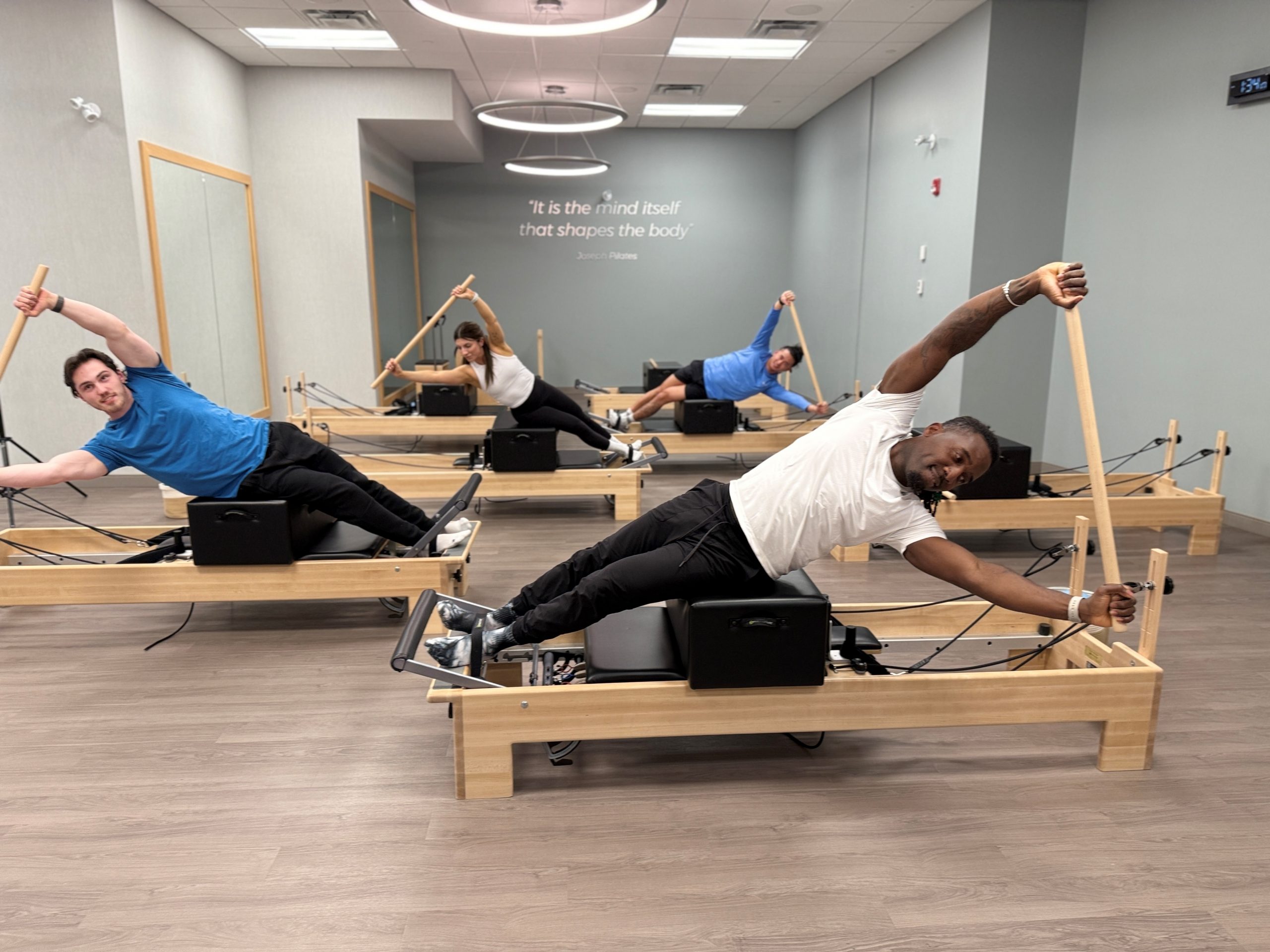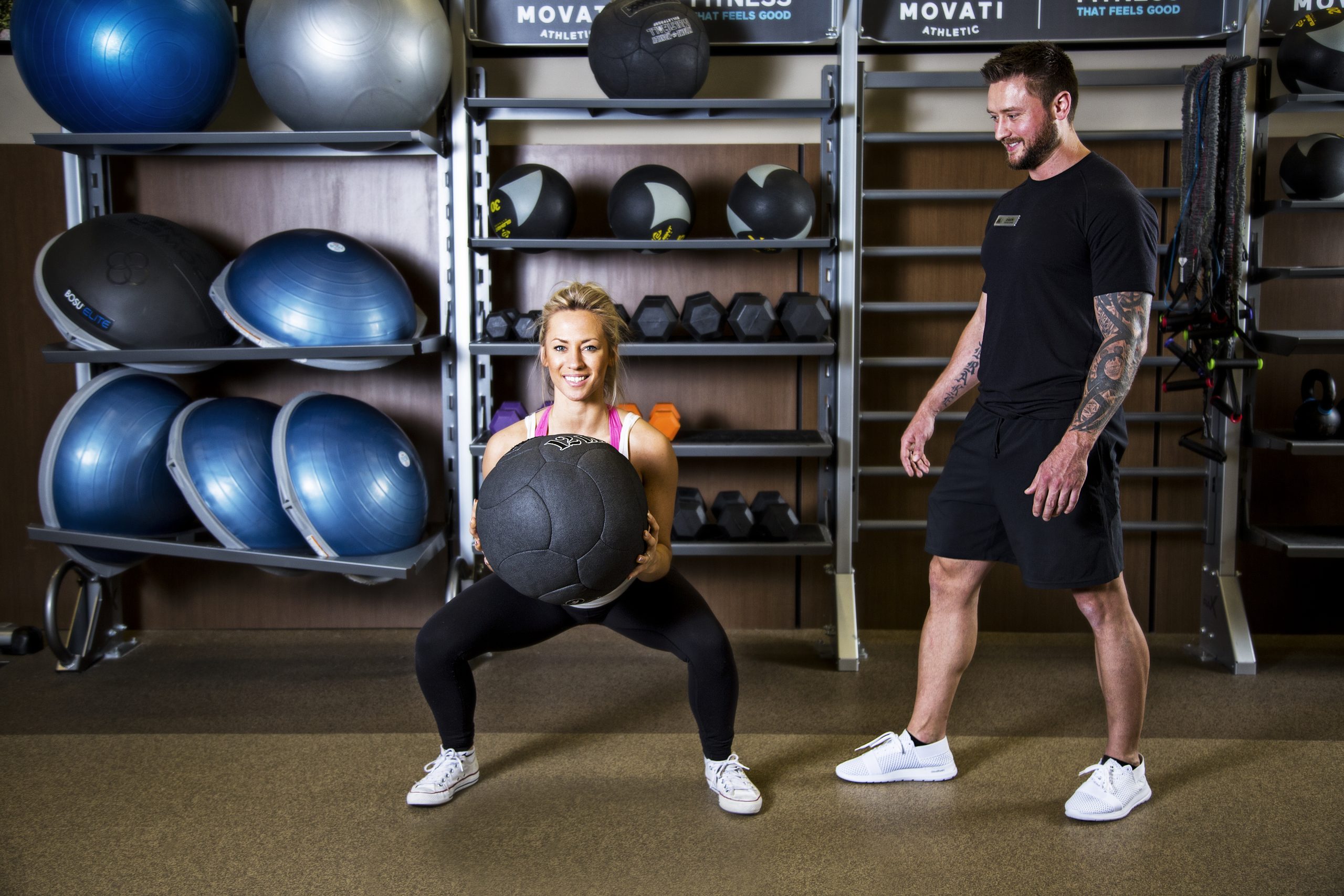International Women’s Day (IWD) is a global celebration of women’s social, economic, and cultural achievements. At MOVATI Athletic, we are proud to recognize the women who inspire and lead within our communities. Join us as we share the stories of three incredible women who shape the future of MOVATI Athletic every day.
Rae Yorke – General Manager, Mississauga Club

How long have you been with MOVATI?
“I have worked with MOVATI Athletic for nine years.”
How long have you been in the fitness industry?
“I’ve been in the fitness industry for nine years, exclusively at MOVATI. Athletics have always been a big part of my life, so working in the fitness industry just made sense.”
Who are some women who have inspired you, and how have they influenced your life?
“It might sound cliché, but my mom is my biggest inspiration. She was an absolute force of nature growing up. As a single parent for a while, she showed me that you can have a career, work hard, and still create an unforgettable childhood. She is the definition of a fierce mama bear warrior, and everything I hope to be.”
What’s something that fitness has given to you or added to your life?
“Fitness has given me structure, stability, and a place to reset. Whenever I’m struggling professionally or personally, I know I can always get a workout into recenter myself. It’s become the core of who I am.”
How would you encourage other women to be active?
“Especially now that I have kids, I realize that everyone’s 24 hours look different. For those just starting or feeling too busy to be active, I’d suggest starting small—changing one little thing each day to create meaningful, impactful habits. Whether it’s going for a walk or trying a new fitness class, every little step counts. When I used to teach group fitness, I always said, ‘Some movement is better than no movement.’ Even the tiniest effort can make an impact.”
What does health & fitness mean to you?
“It’s about mind, body, and soul coming together. Fitness helps release negative energy, mentally centers me, and gives me a purpose to focus on. It’s an opportunity to better yourself in many ways.”
What advice would you give to your 18-year-old self?
“I’d tell my younger self to live passionately. Every decision you make helps shape who you become. So, make mistakes, live fiercely, and trust that good things will come.”
Any advice for women looking to get into the fitness industry?
“There is always a place for you here, no matter what that looks like. If you’re passionate about fitness, we’ll find a spot where you can succeed. Passion is the key to success.”
Top three dinner party guests (girls only!)?
“My grandmother, who passed away when I was young—I’d love for her to see my life now and meet my daughter. I’d also invite Michelle Obama and Caitlin Clark.”
Sheryl Moussa – National Manager, Group Fitness

How long have you been with MOVATI?
“I joined MOVATI Athletic in 2017 as the Group Fitness Manager for the Burlington club. After two years, I became the Regional Manager for the GTA and Western Ontario clubs. I was then promoted to Group Fitness Specialist, then to National Events Manager, and now I’m the National Manager of Group Fitness.”
How long have you been in the fitness industry?
“I’ve been in the fitness industry for 25 years.”
Who are some women who have inspired you, and how have they influenced your life?
“My mom has always been my biggest cheerleader. Watching her raise us as a stay-at-home mom while working part-time taught me about sacrifice and resilience. I’m also inspired by my sister-in-law, my best friends, and my daughter. She’s incredibly strong and resilient—I’m so proud of her accomplishments.”
What’s something that fitness has given to you or added to your life?
“Fitness gave me passion and purpose. I initially got into it to help my daughter socialize at daycare, but I quickly fell in love with the classes. With my background as a dance teacher, the transition was natural and fulfilling.”
How would you encourage other women to be active?
“Move every day. It doesn’t matter what you do, just keep moving. Whether it’s dancing, lifting weights, or walking—stay active and do what you love.”
What does health & fitness mean to you?
“It’s a lifestyle. Health and fitness go hand in hand and are key to longevity. I want to live an active, full life well into retirement.”
What advice would you give to your 18-year-old self?
“I’d tell my younger self to start in the fitness industry sooner. I began teaching classes in my 30s but wish I had started in my 20s. I also would have loved to become a presenter in the industry.”
Top three dinner party guests (girls only!)?
“I’d choose my grandmother for some precious one-on-one time. Her wise words still resonate with me today.”
Julia Narvali – Performance Coach & Pilates Reformer Instructor

How long have you been with MOVATI?
“I’ve been with MOVATI for almost three years—my work anniversary is in May.”
How long have you been in the fitness industry?
“I’ve been in the fitness industry for four years.”
Who are some women who have inspired you, and how have they influenced your life?
“My mom, my grandmother, and my older sister. They are the strongest women I know.”
What’s something that fitness has given to you or added to your life?
“Fitness has given me strength, discipline, and mental clarity. It’s my escape from reality and helps me be the strongest version of myself.”
How would you encourage other women to be active?
“I’d encourage women to find something they’re passionate about. Fitness doesn’t have to be boring; it can be as simple as dancing, walking, or playing with your kids or pets. Just find something that keeps you moving.”
What does health & fitness mean to you?
“It’s about overall well-being—a balance of mental, physical, and emotional health.”
Any advice for women looking to get into the fitness industry?
“Embrace your strength in all forms—physically, mentally, and emotionally. It’s easy to get caught up in external expectations, but true confidence comes from within.”
What advice would you give to your 18-year-old self?
“Build your confidence from within. External validation is tempting, but true confidence comes from being happy with who you are.”
Top three dinner party guests (girls only!)?
“I’d invite Mel Robbins—I’m currently reading her book, and it’s changing my life. I’d also invite my best friends, Serina and Isabella.”
Celebrating Women Every Day
At MOVATI Athletic, we are proud to support and celebrate the incredible women who lead, inspire, and create a positive impact in our communities. This International Women’s Day, we honor Rae, Sheryl, Julia, and all the amazing women who make MOVATI Athletic a place of strength, resilience, and growth.
Join MOVATI Today and get Started with this Special Offer. Already a member? Get customized programming and improve your mobility and recovery by consulting with one of our Performance Coaches in club and complete your Game Plan Session or join seminars with one of our fitness professionals.


















